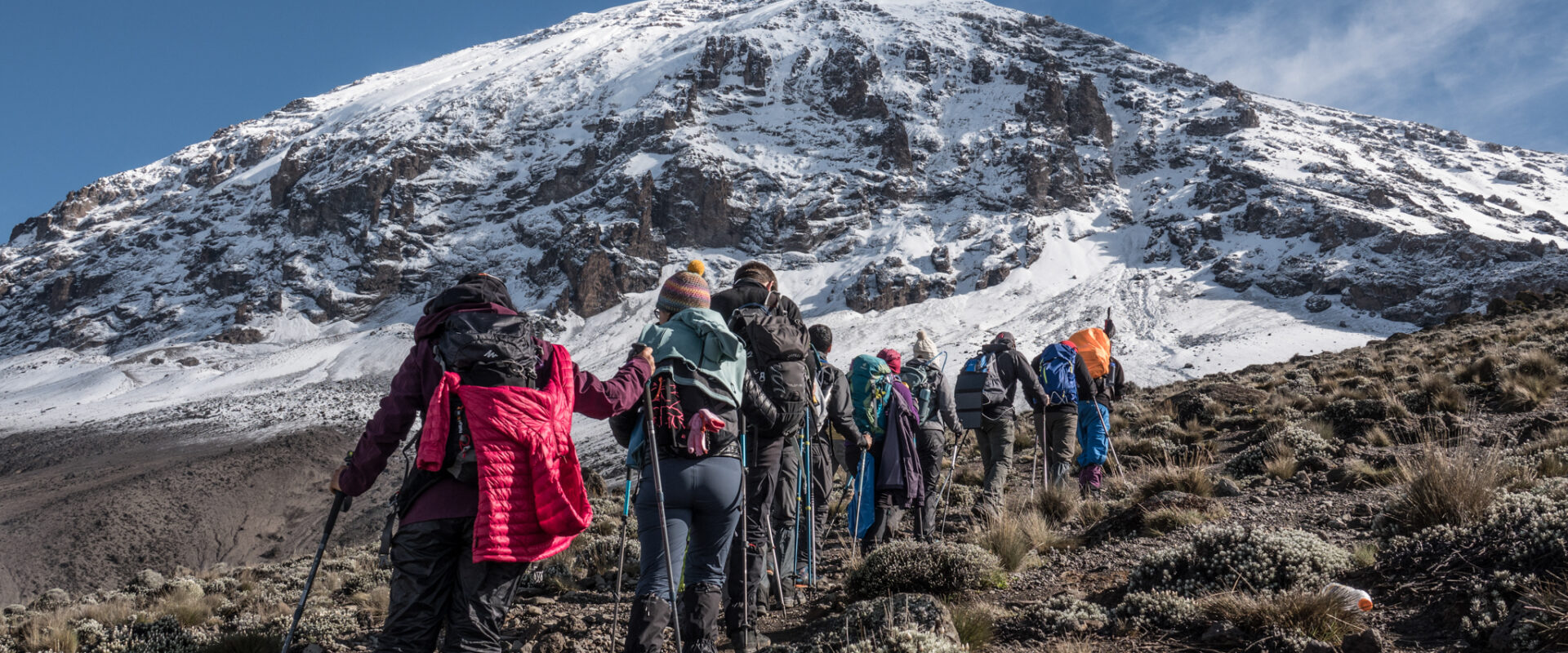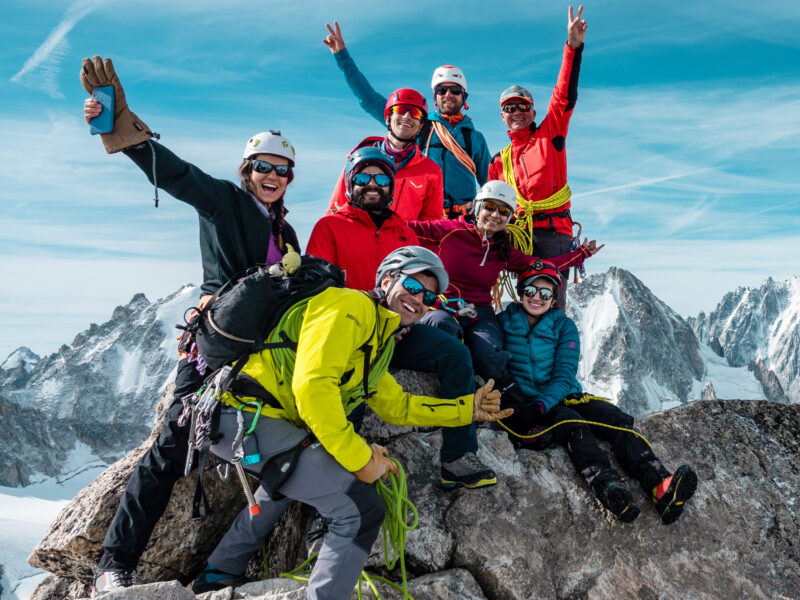BY Rami Rasamny | October 03 2024
Tips and Tricks for a Warm and Cozy Experience on Kilimanjaro Nights

Scaling the majestic heights of Kilimanjaro is an adventure of a lifetime, but it’s not without its challenges, especially when night falls and the temperature plummets. A cold night in your tent can turn rest into shivers, a common climber’s problem. To ensure a warm and cozy experience on chilly Kilimanjaro nights, it’s important to plan ahead and equip yourself with the right strategies and gear. In this article, we will provide you with 14 essential tips and tricks to stay warm and comfortable during your Kilimanjaro trek.
Layer Your Clothing for Optimal Warmth
One of the key strategies to combat the cold on Kilimanjaro nights is to layer your clothing effectively. Think of your clothing as a team, with each layer playing a specific role in keeping you warm and protected. The base layer should wick away sweat, the middle layer should trap heat, and the outer layer should block wind and rain. By building this fortress of layers, you create an insulating barrier that shields you from the cold.
Invest in a High-Quality Sleeping Bag
Your sleeping bag is your night-time shield on Kilimanjaro. Choosing a high-quality, synthetic sleeping bag is crucial to ensuring optimal warmth and comfort. Synthetic sleeping bags have the advantage of retaining heat even in damp conditions, making them ideal for unpredictable weather on the mountain. If your clothes happen to get wet, tuck them inside your sleeping bag. Your body heat will help dry them overnight, ensuring you have dry and warm clothes to wear the next day.
Embrace the Power of Thermal Underwear
Thermal underwear is your secret armor against the cold. These snug-fitting undergarments act as a cozy blanket, trapping your body heat and keeping you warm throughout the night. Invest in high-quality thermal underwear made from moisture-wicking materials to ensure maximum comfort and insulation.
Don’t Forget Your Warm Hat and Gloves
Heat tends to escape from your head and hands, so it’s essential to keep them well-covered. A warm hat and gloves are like lids on pots of simmering soup, helping to retain the warmth within your body. Opt for insulated, wind-resistant hats and gloves to ensure maximum protection against the chilly Kilimanjaro nights.
Harness the Power of Hot Water Bottles
Imagine having your own little sun inside your sleeping bag. Fill a bottle with hot water before bedtime and place it inside your sleeping bag. This simple trick will provide you with a cozy source of heat throughout the night it’s like snuggling with a warm cloud. Additionally, if your extremities are feeling particularly cold, placing a hot water bottle at the foot of your sleeping bag can help keep your toes toasty.
Stay Dry to Stay Warm
Wetness is the enemy of warmth, so it’s crucial to keep dry on Kilimanjaro. Make sure to pack waterproof clothing and carry a rain cover for your backpack. It’s also a good idea to bring extra pairs of socks and invest in waterproof hiking boots to keep your feet dry. If you do get wet, change into dry clothes as soon as possible to prevent heat loss.
Fuel Your Internal Furnace with High-Energy Foods
Eating the right foods is like fueling a fire that keeps your internal furnace burning. Pack high-energy foods that are rich in carbohydrates and healthy fats to provide your body with the fuel it needs to generate heat. Nuts, dried fruits, energy bars, and trail mix are excellent options to keep your energy levels up and your body warm.
Stay Hydrated to Maintain Your Body’s Functions
Drinking water is like oiling a machine; it keeps everything running smoothly, helping your body regulate heat. Even though you might not feel as thirsty in the cold, it’s crucial to stay hydrated. Make sure to drink plenty of water throughout the day to avoid dehydration, which can impair your body’s ability to stay warm.
Warm Up Your Body with Pre-Bed Exercise
A bit of exercise before bed is like revving a car engine; it gets your body heat up and prepares you for a cozy night’s sleep. Engage in light stretching or take a short walk around the campsite to get your blood circulating and generate some extra warmth. Just be mindful not to overexert yourself, as you’ll need your energy for the climb ahead.
Insulate Your Sleeping Pad for Added Warmth
Sleeping pads are like a barrier between you and the cold earth. Invest in an insulated sleeping pad to provide an extra layer of insulation between you and the chilly surface. This will help prevent heat loss and keep you warm throughout the night.
Keep Your Breath Outside the Sleeping Bag
To maintain warmth and prevent condensation inside your sleeping bag, keep your breath outside the bag. Breathing into your bag can cause moisture buildup, which can make you feel damp and cold. Position your face away from the opening of the bag or use a scarf or balaclava to cover your mouth and nose while you sleep.
Create a Windproof Haven with Your Tent
A windproof tent acts as a shield against the chilly winds on Kilimanjaro. Make sure to properly pitch your tent and secure it against strong gusts. Consider using additional guy lines and stakes to reinforce its stability. Creating a windproof haven will make a significant difference in keeping you warm and comfortable throughout the night.
Embrace the Coziness of a Balaclava
A balaclava is a versatile piece of gear that covers your head and neck, acting as a personal heater. It helps to keep the warmth circulating around your head, preventing heat loss from these sensitive areas. Invest in a high-quality balaclava made from moisture-wicking materials to ensure optimal comfort and warmth.
Avoid Alcohol to Maintain Body Heat
While a sip of alcohol might make you feel temporarily warm, it’s a deceptive trickster. Alcohol actually lowers your body heat temperature and impairs your body’s ability to regulate heat. It can also cause dehydration, which further exacerbates the risk of hypothermia. It’s best to avoid alcohol on Kilimanjaro to maintain your body’s heat and stay safe.
Conclusion
In conclusion, conquering the cold on Kilimanjaro nights requires careful planning and the right strategies. By layering your clothing, investing in a high-quality sleeping bag, wearing thermal underwear, and using hot water bottles, you can ensure a warm and cozy experience. Additionally, staying dry, eating high-energy foods, staying hydrated, and exercising before bed will help generate internal heat. Insulated sleeping pads, breathing outside the sleeping bag, windproofing your tent, wearing a balaclava, and avoiding alcohol are additional measures to keep in mind. With these tips and tricks, you’ll be well-prepared to tackle the cold and enjoy your Kilimanjaro adventure to the fullest.
About The Author
Rami Rasamny is the founder of Life Happens Outdoors, a premium adventure travel community dedicated to transforming lives through curated outdoor experiences. A mountaineer and entrepreneur, Rami has led teams on some of the world’s most challenging peaks, from the Alps to the Himalayas. His mission is to make adventure accessible, transformative, and safe for all who seek to push their limits and Come Back Different.
About Life Happens Outdoors
At Life Happens Outdoors, we believe in the power of nature to transform lives. As proud members of the Adventure Travel Trade Association (ATTA) and the World Travel & Tourism Council (WTTC), our team of certified guides and outdoor professionals is committed to the highest standards of safety, sustainability, and excellence.
Discover more about our story and mission on our Meet LHO page, or explore our curated adventures such as the Tour du Mont Blanc Trek, the Climb of Kilimanjaro, and Chasing the Northern Lights.














